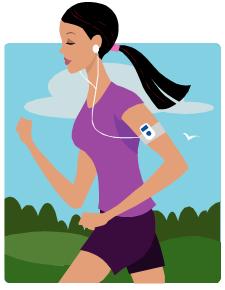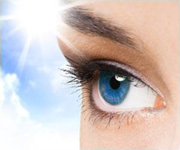 Purpose: To assess the dose-response relationship of vigorous physical activity (running distance, km·d-1) or cardiorespiratory fitness (meters-per-second pace during a 10-km footrace) to the risk for incident glaucoma.
Purpose: To assess the dose-response relationship of vigorous physical activity (running distance, km·d-1) or cardiorespiratory fitness (meters-per-second pace during a 10-km footrace) to the risk for incident glaucoma.
Conclusions: These data provide preliminary evidence that vigorous physical activity may reduce glaucoma risk, which, in the absence of medical record validation, could represent ocular hypertension in addition to frank glaucoma. Additional follow-up with validation is needed to identify the type of glaucoma affected.
See full text article attached.

 For the past 9 years, I have been supplementing with glucosamine chondroitin to ward off joint issues due to an intense daily exercise regimen. I’ll never know for sure whether this supplement works as advertised since I began taking it as a preventative measure and to this day do not suffer from joint pain. However, when I read recently on the internet that chondroitin can possibly make matters worse for glaucoma patients, I dropped the supplement overnight and did not wean myself off it. This action may have led to the unintended result which I describe below.
For the past 9 years, I have been supplementing with glucosamine chondroitin to ward off joint issues due to an intense daily exercise regimen. I’ll never know for sure whether this supplement works as advertised since I began taking it as a preventative measure and to this day do not suffer from joint pain. However, when I read recently on the internet that chondroitin can possibly make matters worse for glaucoma patients, I dropped the supplement overnight and did not wean myself off it. This action may have led to the unintended result which I describe below. Purpose: To assess the dose-response relationship of vigorous physical activity (running distance, km·d-1) or cardiorespiratory fitness (meters-per-second pace during a 10-km footrace) to the risk for incident glaucoma.
Purpose: To assess the dose-response relationship of vigorous physical activity (running distance, km·d-1) or cardiorespiratory fitness (meters-per-second pace during a 10-km footrace) to the risk for incident glaucoma. Background
Background